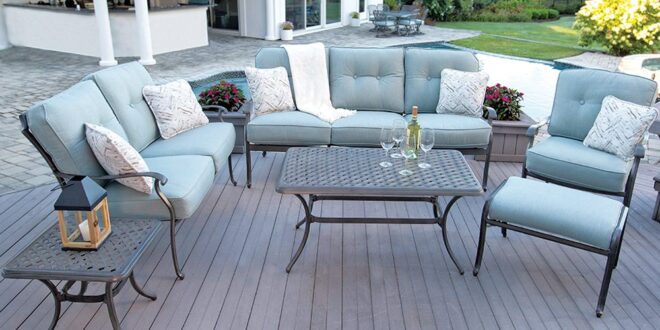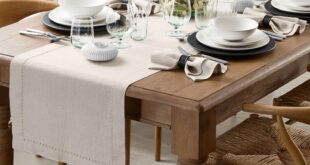Winter is slowly approaching, which is probably why you’ve started making some preparations. So, you’ve covered all the faucets located in your backyard, you’ve drained your hose and placed it in your shed, and besides the rake, you’ve most likely stored all your gardening tools. However, what should you do with your outdoor furniture?
To put it as simple as possible, what you’ll have to do with your outdoor furniture will entirely depend on the materials used for manufacturing them. Hence, to make things easier for you here is a complete list of materials that you can and cannot leave outside all year round.
Table of Contents
Three Materials That You Can Leave Outside
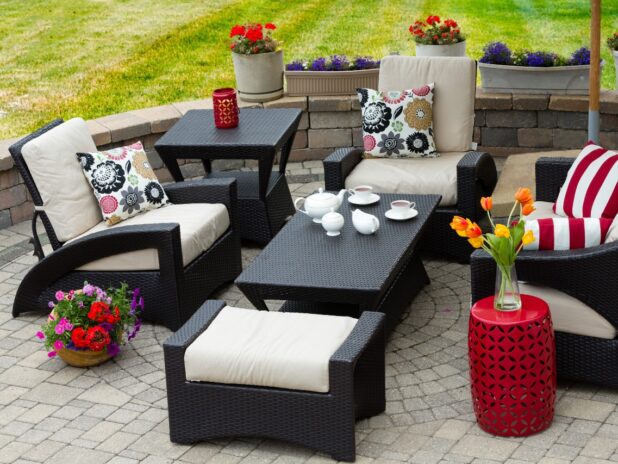
1. Wooden
Now, you might be wondering – won’t wood rot because of snow or rain? Well, it might, but only if you don’t repaint, retreat, and restain it. Most wooden patio furniture can be left outside throughout the year, mostly because it can withstand extreme environments and temperatures. Of course, this doesn’t mean that it won’t wear down over time, which is why you must ensure that you maintain the pieces properly.
So, if you have tables or chairs made from wood, you can leave them, but ensure that you treat them first. If you leave it outside during autumn and winter, you can expect it to entirely rot. This is why you should also cover it with a breathable material that’ll protect it from the elements and that’ll ensure that mold doesn’t develop. This is why you must be extra careful in determining what you’ll do with your wooden patio furniture.
2. Plastic
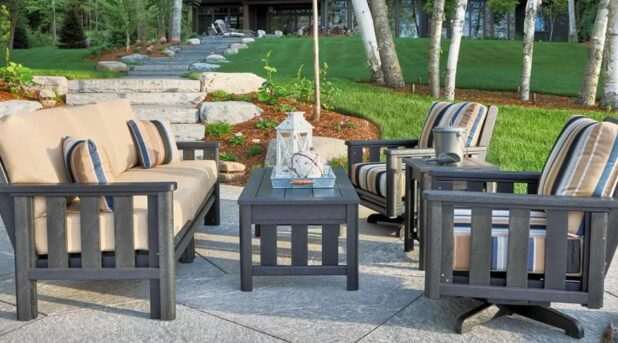
As you already know, plastic cannot rust or be influenced by water, and the only thing that you’ll need to do is to ensure that you place something heavy on the pieces, mostly because strong winds might blow them away and damage the surroundings of your home. Also, they can be left outside for the entire year with little to no maintenance at all. Thus, if you have plastic patio sets, don’t worry, it won’t get damaged at all.
3. Rattan
If you’ve purchased high-quality rattan furniture for your patio, you could leave it outside, however, you’ll have to make sure that you place it at a place where snow cannot reach it. It is waterproof and it won’t have any issues with withstanding cold temperatures, however, if you opted for some cheaper models, you should store it since otherwise, it’ll break. Also, you’ll need to cover it, no matter if it is high-quality or not. You can click here to see some high-quality rattan patio sets.
Five Materials That You Cannot Leave Outside
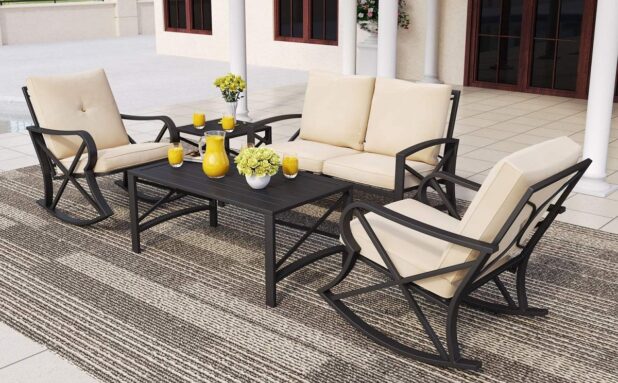
1. Metal
Yes, you’ve guessed it right, you cannot leave metal furniture outside during winter since it’ll get rusted and corroded. Hence, before you decide whether or not you’ll leave it outside during winter, treat the pieces. Aluminum cannot also be left outside since it won’t withstand moisture, meaning that it’ll ruse relatively quickly. To prevent this from happening, store the pieces in your gardening shed or garage.
2. Wicker
Wicker featured a woven design and it’s really not a material, which is why you shouldn’t leave it outside. If you do, you’ll notice that it’ll crack and rot under moisture and snow, and even the low temperatures can cause it to get less durable. This is why you must store it inside. The only situation where you can leave it is if you opted for purchasing high-quality wicker sets or if your state doesn’t experience too much snowfall during winter periods.
3. Rattan
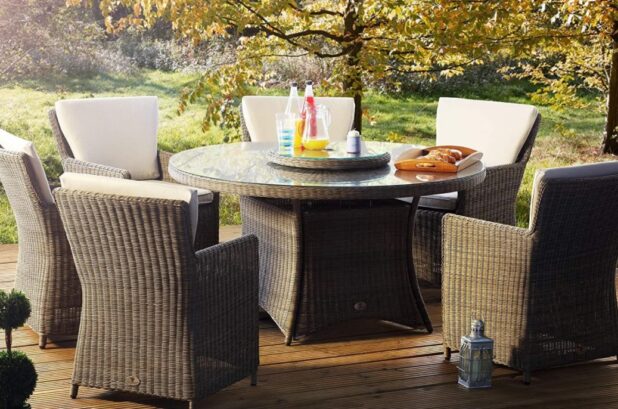
Yes, we’ve already said that rattan can be left outside, but this will only apply if you bought high-quality models. Hence, if you want to protect it, you should either store it in a dry area or cover it and leave it outside at a place that snow cannot reach it. Also, don’t forget to store the cushions inside since they aren’t waterproof and can easily get damaged. So, depending on what you bought, store it accordingly.
4. Stone
A lot of homeowners think that stone tables and benches can be left outside during the entire year, however, this isn’t entirely true, mostly because it can easily crack, meaning that water and air can enter the material. If it’s left exposed to these things it’ll completely crack, hence, it will get destroyed. Besides sealing the existing cracks, you might also want to cover the furniture with durable plastic sheets that will prevent excess water from ruining it.
5. Wrought Iron
Wrought iron is one of the most durable materials available on the market, however, this doesn’t mean that it won’t rust or corrode over time. So, if you have patio furniture made from this material, you must store them inside during cold seasons. After all, it’s extremely expensive, and it can be expensive repairing the pieces, thus, before you store it, also ensure that you apply a corrosion-resistant finish that’ll prevent it from getting rusty while in storage.
So, Where Should I Store it?
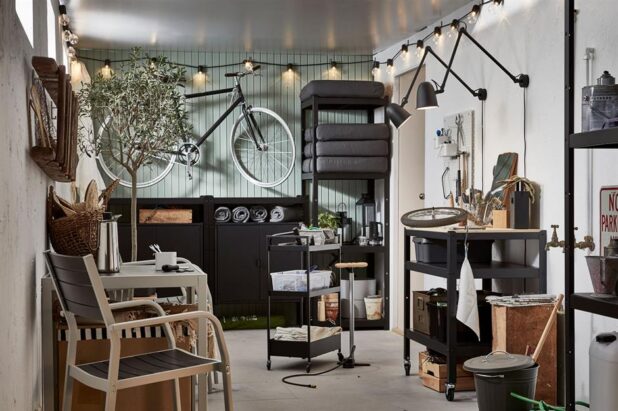
Before we conclude this article, it’s worth mentioning a few storage options that you have. Hence, if needed, you can store your furniture in your garage, shed, and basement. However, if you don’t have these options available, you could, for instance, opt for storing it with friends or family that have the available space, you can rent a storage unit, or you could take it to your cabin or summer home to protect it.
Conclusion
As you can see, depending on the materials of your patio furniture, you’ll either be able to leave it outside or you’ll need to store it during seasons that experience heavy rainfall and snowfall. By storing them on time, you can prevent a wide range of things – such as water, mold, and rust – from damaging the materials, thus, you won’t need to purchase new models next year.
Since you now understand exactly what you’ll have to do, you really shouldn’t waste any more time. Instead, you might want to determine what you’ll have to place inside and then you should start protecting, cleaning, treating, and storing your furniture so that it remains usable for next year.
Read Also:
5 Interior and Exterior Design Tips for Your Veranda
5 Useful Outdoor Decorating Ideas on a Tight Budget
How to Decorate Your Veranda in an Eco-Minded Way
 World Magazine 2024
World Magazine 2024
